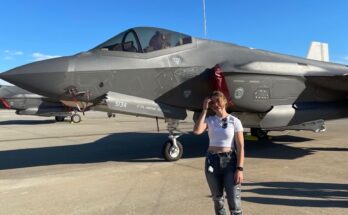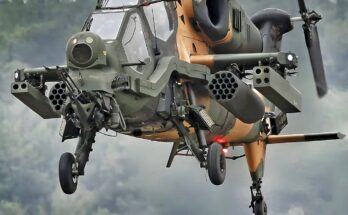
The F-14 Tomcat remains one of the most iconic fighter aircraft ever to take to the skies. Built for both speed and versatility, it served the U.S. Navy for more than three decades as a fleet defense interceptor and strike aircraft. While its daytime missions are impressive on their own, the preparation for night operations training reveals another side of naval aviation—one where precision, discipline, and technology must work together under the most challenging conditions.
Preparing an F-14 Tomcat for night operations begins hours before the pilot and radar intercept officer, or RIO, strap into the cockpit. Ground crews play a vital role in the process, performing detailed inspections of the aircraft. Every system, from hydraulics and avionics to lighting and fuel, is checked and double-checked. Special attention is given to the Tomcat’s navigation and targeting systems, since these become critical when visibility is reduced after sunset. The aircraft’s exterior lighting, including wingtip and tail position lights, is tested to ensure other pilots can maintain formation without issue.
Night training flights are not just about flying in the dark—they simulate the conditions the Tomcat would encounter during actual combat operations. This means the crews train to operate with minimal lighting, relying heavily on instruments. Pilots must develop a heightened awareness of their cockpit displays, trusting the gauges and radar screens rather than their natural senses, which can be misleading in low visibility. For the RIO, operating the AN/AWG-9 radar and coordinating target tracking becomes even more demanding without the benefit of visual reference.
Another important aspect of preparation is the pilot’s gear. Night vision devices, while useful in some contexts, are not always practical in high-speed jet operations. Instead, pilots rely on helmet-mounted lights, luminous cockpit instruments, and well-drilled muscle memory to find controls without fumbling. The cockpit of the F-14 is designed with night operations in mind, using dimmable lighting to preserve the pilot’s night vision while keeping instruments readable.
Launching from an aircraft carrier at night adds an entirely new layer of difficulty. The carrier deck is a tightly choreographed environment in daylight, but in darkness, it becomes an exercise in trust and precision. Yellow-shirted flight deck directors use illuminated wands to guide the Tomcat into position. The roar of the engines, the rush of the steam catapult, and the black horizon ahead test even the most seasoned aviators. Once airborne, the pilot’s task is to climb steadily, establish formation if flying with others, and begin the training exercises.
Night operations often include aerial refueling, simulated intercepts, and carrier landings. Each of these requires absolute concentration. A night carrier landing is often described as one of the most difficult maneuvers in aviation. Pilots must approach a moving flight deck in darkness, guided primarily by instruments and the ship’s landing systems. Precision is non-negotiable—there is no margin for error.
In the end, the preparation for night ops training is about building confidence and discipline. The F-14 Tomcat, with its powerful engines, variable-sweep wings, and advanced avionics, was built for the challenge. But it is the dedication of its crews—on the ground and in the cockpit—that truly made these night missions possible.


